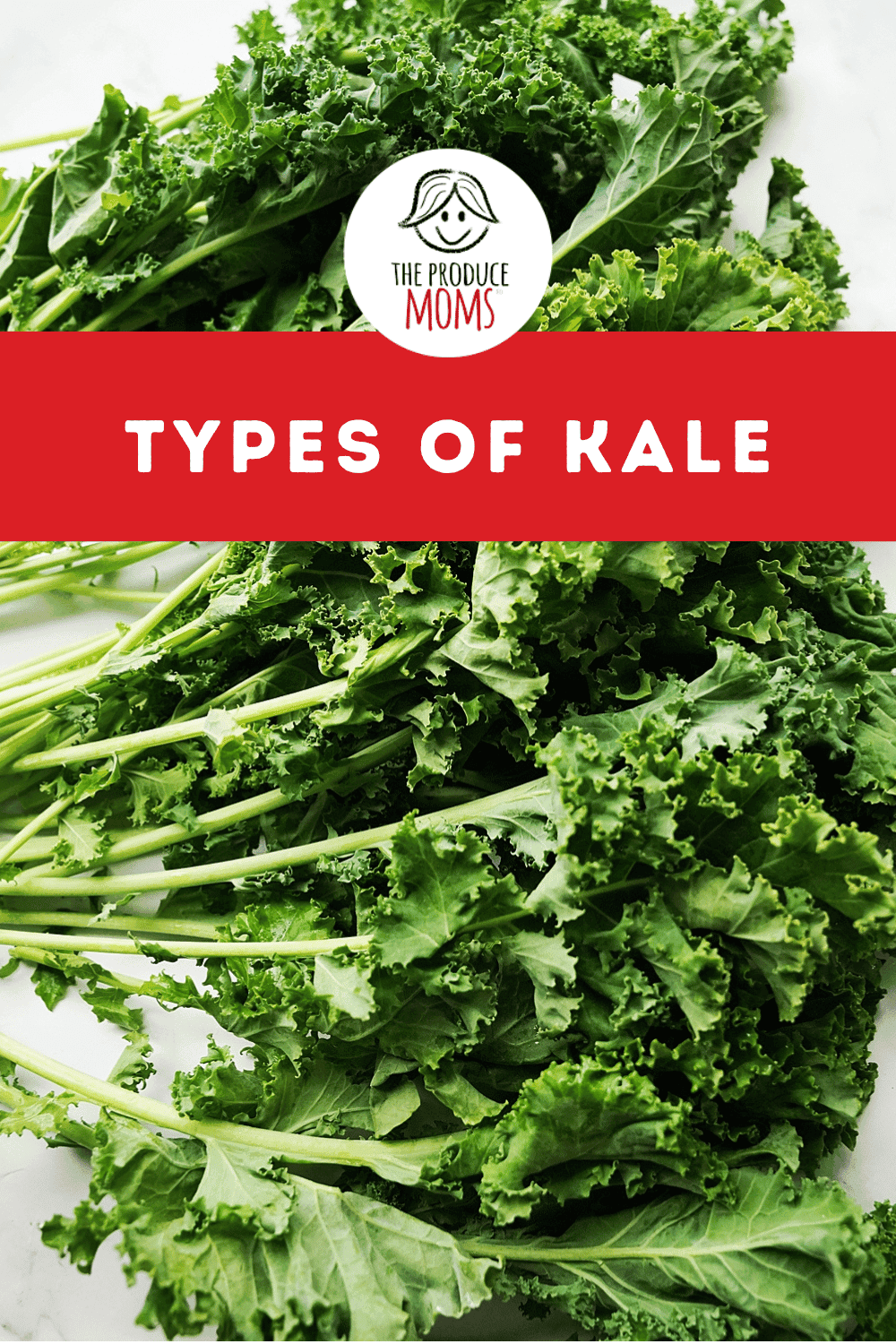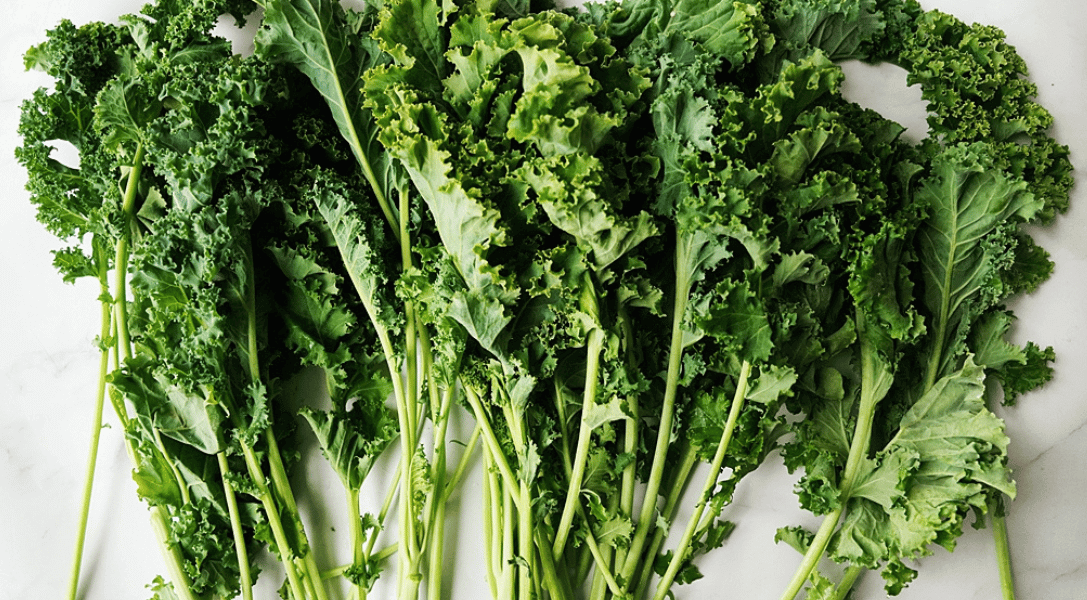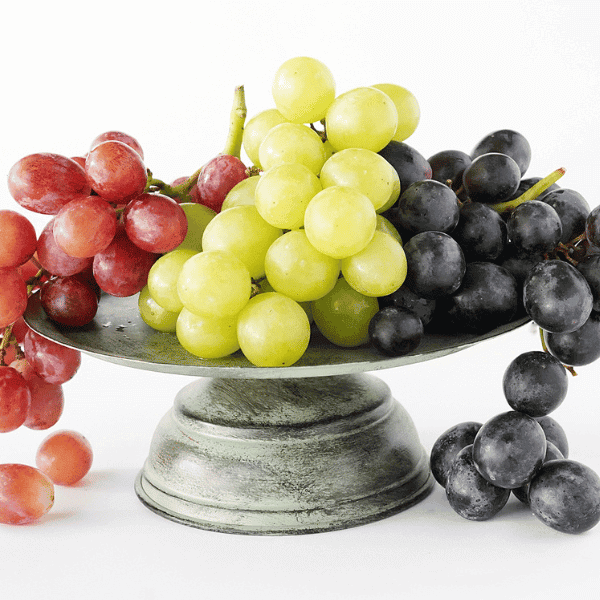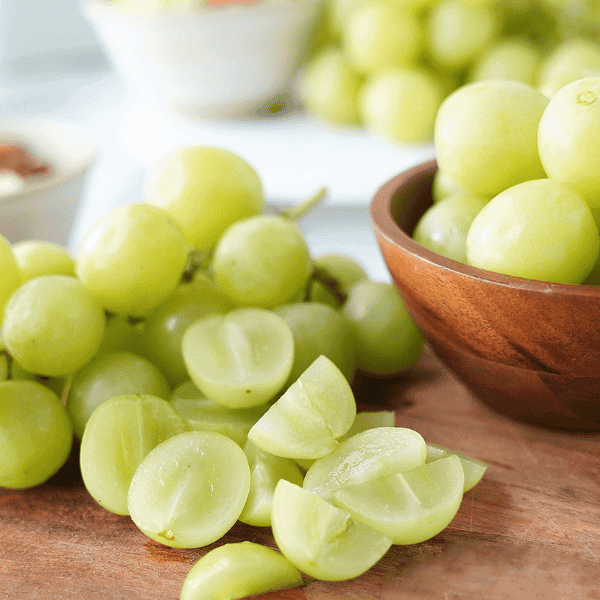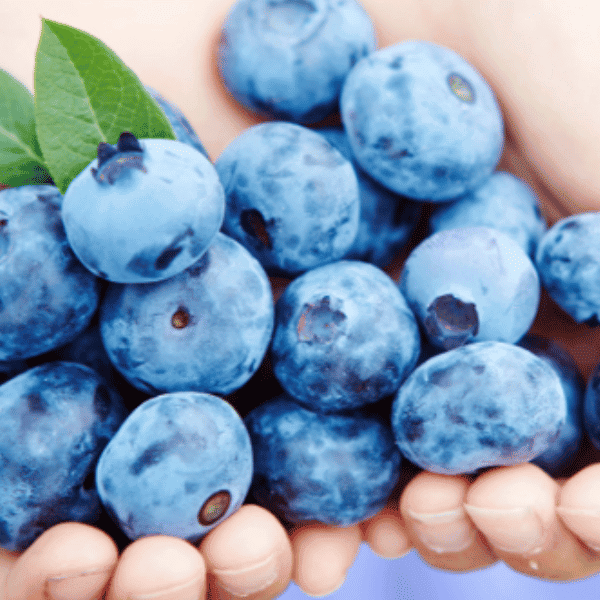Did you know that there are several types of kale?
Kale is a leafy green that has become synonymous with “healthy” eating in recent years. There are different types of kale each with its own unique flavor, texture, and nutritional benefits.
Whether you’re a kale enthusiast or just starting to explore this powerhouse nutrient-filled veggie, understanding the varieties can help you choose the best one for your meals.
We will dive into the different varieties along with sharing expertise on how to store and serve. Whether you’re tossing it in a salad, blending it into a smoothie, or sautéing it for a savory side dish, the type of kale you select can make a world of difference in taste and texture.
What is Kale?

Kale is a leafy green vegetable that is part of the Brassica family, which also includes other veggies like cabbage, broccoli, and Brussels sprouts. It is also known for its deep green color and robust, slightly bitter flavor. Kale is hailed as a superfood because of the nutritional profile.
Nutritional Overview of Kale
Kale is a nutritional powerhouse. It is packed with a wide array of vitamins, minerals, and antioxidants that contribute to overall health.
- Vitamin K – Kale is an excellent source of Vitamin K, which plays a crucial role in blood clotting and bone health.
- Vitamin A – Kale provides a significant amount of vitamin A, important for vision and immune function
- Vitamin C – Kale is also rich in vitamin C, a potent antioxidant that supports skin health and the immune system.
- Fiber – Kale is high in fiber, which aids digestion and promotes feelings of fullness.
This leafy green is a great source of minerals like calcium, magnesium, and potassium, which support bone health, muscle function, and heart health. With its low calorie count and zero grams of fat, kale makes a nutrient-dense addition to any meal, offering a variety of health benefits without adding extra calories.
Most Common Types of Kale
Kale has become a household and restaurant staple, thanks to its incredible nutritional profile and versatility. But not all kale is created equal! There are several different types, each with its own unique appearance, flavor, and texture. We will explore some of the most mainstream and common types of kale.
Curly Kale
Arguably the most recognizable type, curly kale is known for its ruffled, curly leaves and vibrant green color. Its flavor is slightly bitter and peppery, especially when raw. Curly kale softens and becomes milder when cooked. It is the most recognizable by consumers, since it’s the most common variety found in groceries.
Lacinato Kale (Dinosaur Kale or Tuscan Kale)
Lacinato kale, often referred to as “dinosaur kale” because of its textured, dark blue-green leaves. It has a more delicate, tender texture compared to curly kale. The leaves are long and narrow, with a slightly sweeter, less bitter flavor. Because of its tender nature, lacinato kale can be eaten raw in salads without the need for massaging or tenderizing, unlike its curly counterpart.
Baby Kale
As the name suggests, baby kale is simply young, tender kale harvested before it reaches full maturity. It typically comes from any variety of kale, but the leaves are much smaller, softer, and less fibrous than mature kale. Baby kale has a mild, slightly sweet flavor. Baby kale is increasingly popular for its ease of use and versatility.
More Types of Kale
There are close to 150 other varieties of kale, and we have put together a list of some of the most popular. Oftentimes, the kales listed below are only found in certain regions around the world.
- Red Russian Kale
- Scarlet Kale
- Beira Kale
- Redbor Kale
- Darkibor Kale
- Japanese Flowering Kale
- White Kale
- Chinese Kale
- Brazilian Kale
How To Store Kale
Storing kale properly is key to preserving its freshness and nutritional value. The best way to store kale is by keeping it in the refrigerator.
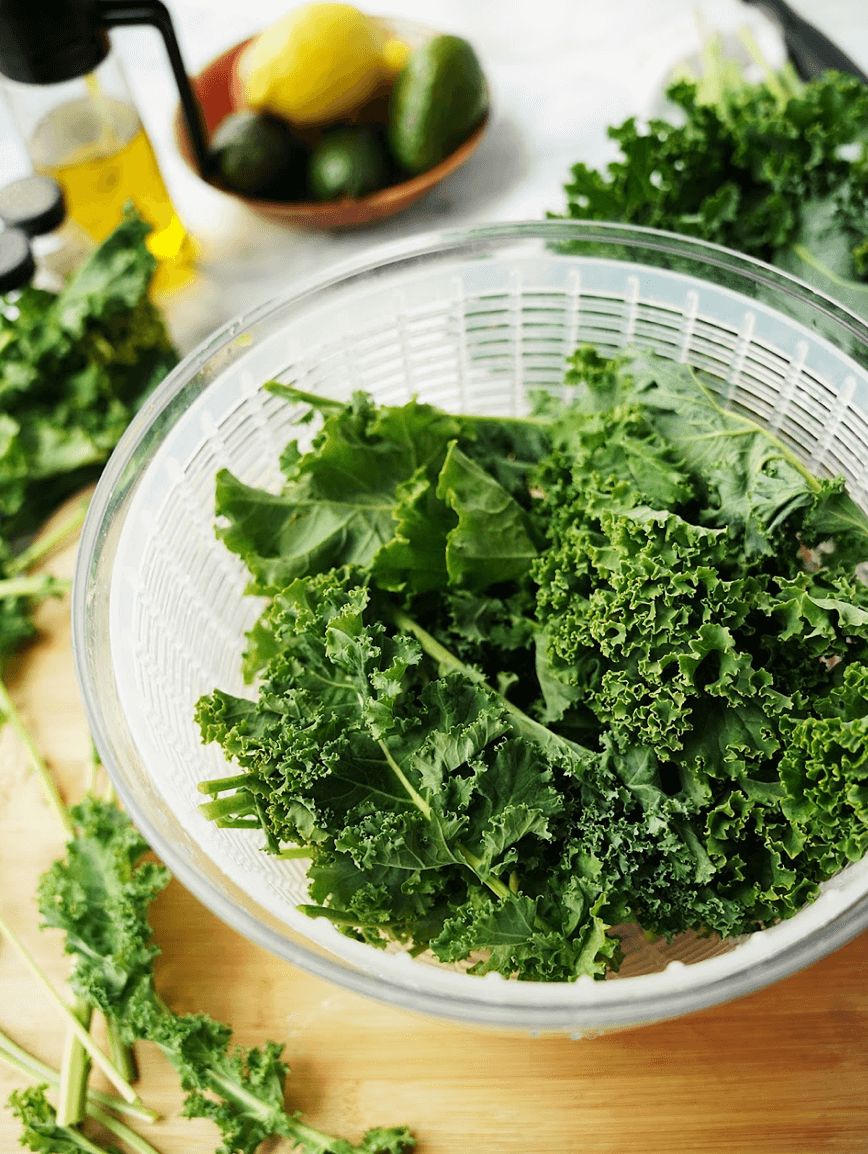
First, rinse the leaves. Then dry them thoroughly with a clean towel or salad spinner to remove any excess moisture. Once dry, you can either leave the leaves whole or remove the stems and chop them.

Wrap the kale in a damp paper towel and place it inside a perforated plastic bag or a container with some ventilation holes. This will help maintain the right amount of humidity while allowing airflow. This should keep the leaves crisp for 5-7 days.
For longer storage, you can freeze kale. To freeze kale, wash and chop it, then blanch the leaves by immersing them in boiling water for about 2 minutes, followed by a quick plunge into ice water to stop the cooking process.

After blanching, drain and dry the kale as much as possible before placing it in freezer bags or airtight containers. Properly frozen kale can last up to 6 months.
Ways To Enjoy Kale
As we have mentioned several times, kale is an incredibly versatile vegetable. Below you will find some of the top ways to use kale.
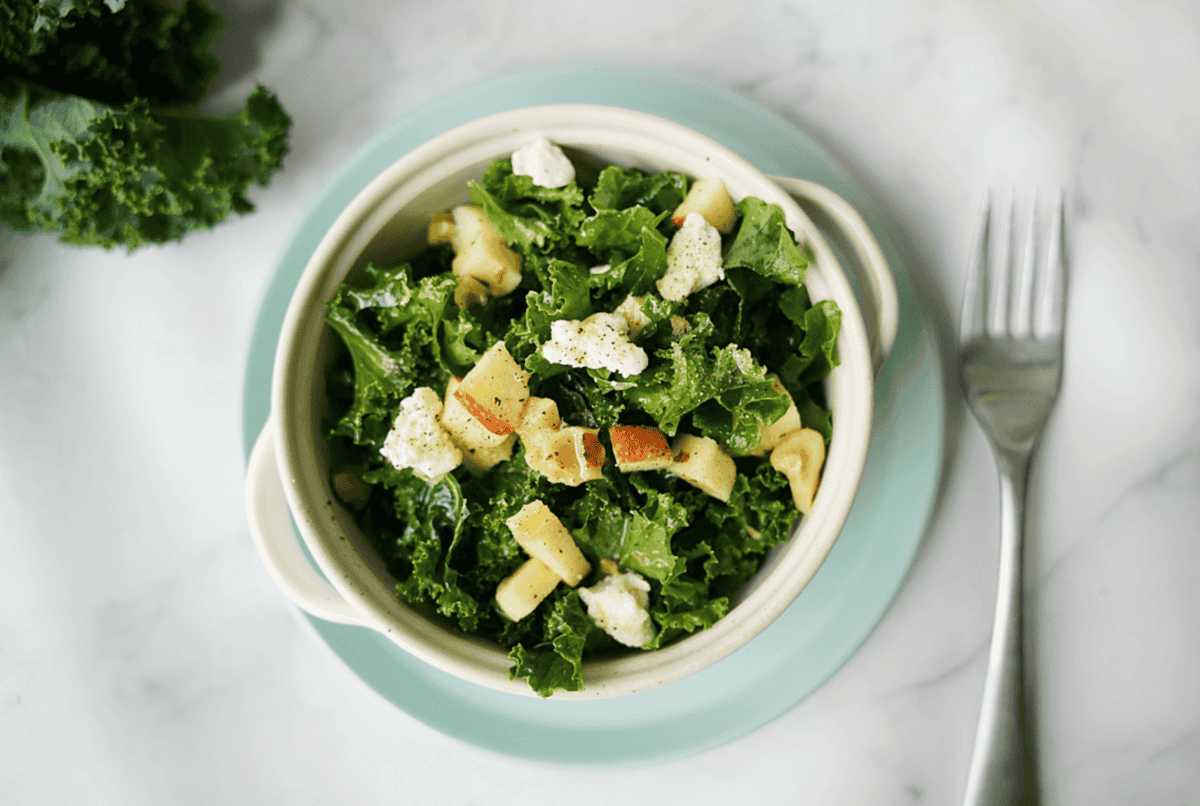
In Salads – Kale makes an excellent base for hearty salads. And you can use any type of kale for the salad base.
Sauteed – Sautéing kale is one of the easiest and most flavorful ways to enjoy it. Heat olive oil in a pan, add garlic and onions, then toss in chopped kale and cook until tender. It’s quick, simple, and delicious.
Smoothies or Juices – Kale is an excellent addition to smoothies and juices, providing a nutrient boost without compromising on flavor.
Kale Chips – Kale chips are a crunchy, healthy snack that’s easy to make at home.
Pasta – Kale adds a wonderful earthy flavor and a slight crunch to your pasta dish, balancing out the creamy or savory sauce you choose.
Soups and Stews – Kale is a fantastic addition to soups, stews, and broths. Whether in a hearty vegetable soup, a bean-based stew, or a creamy potato dish, kale adds depth and nutrients.
Tacos, Wraps & Sandwiches – For a nutritious twist on tacos, wraps, and sandwiches, try adding kale in place of lettuce.
Risotto – Incorporating kale into risotto adds both color and a healthy crunch. Stir in finely chopped kale toward the end of cooking so it wilts into the creamy rice.
Pizza Topping – For a nutritious pizza topping, try adding chopped kale (raw or sauteed). It’s an easy way to get your greens while enjoying a favorite comfort food.
Stir-Fries – Kale makes a great addition to stir-fries, where it’s cooked quickly in a hot pan with other vegetables and your choice of protein. The kale holds its texture well when stir-fried, and it absorbs the savory flavors of the seasonings and sauces.
With the versatility of kale, these ideas are just the beginning! Whether you’re enjoying it raw, sautéed, blended, or baked, there are countless ways to incorporate kale into your meals, making it easy to reap the nutritional benefits of this leafy green!
